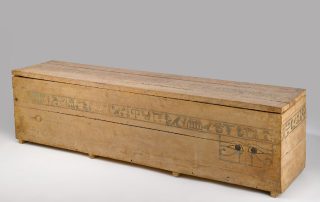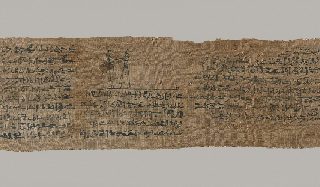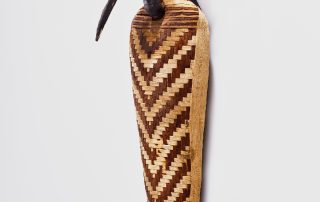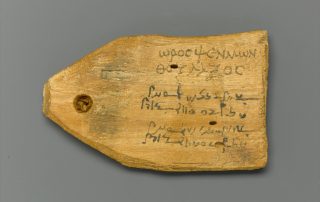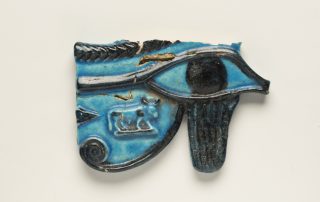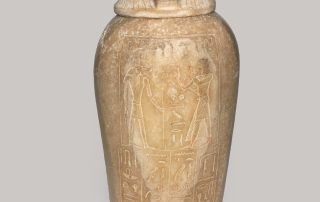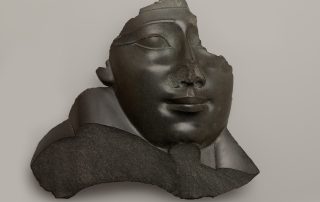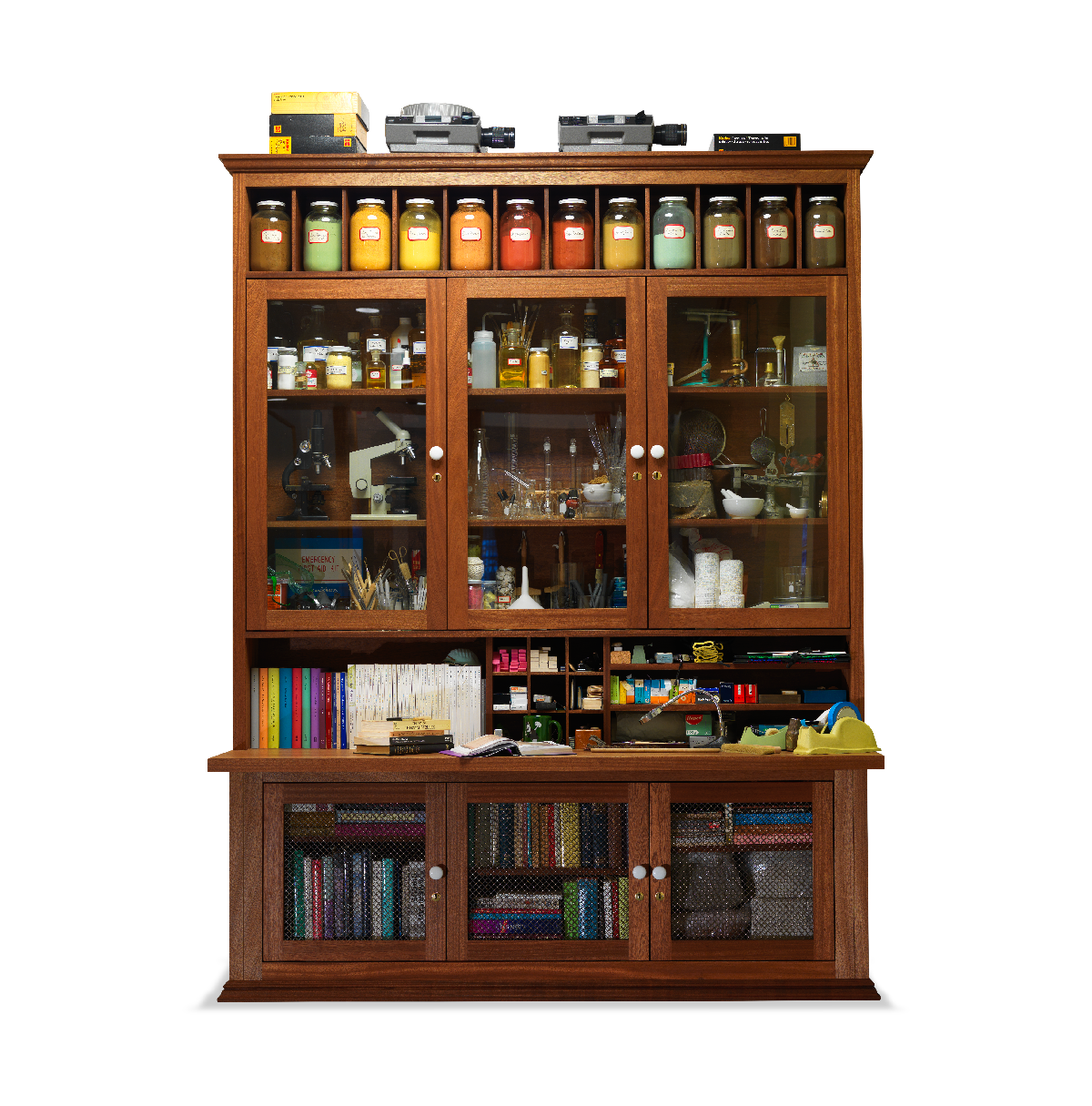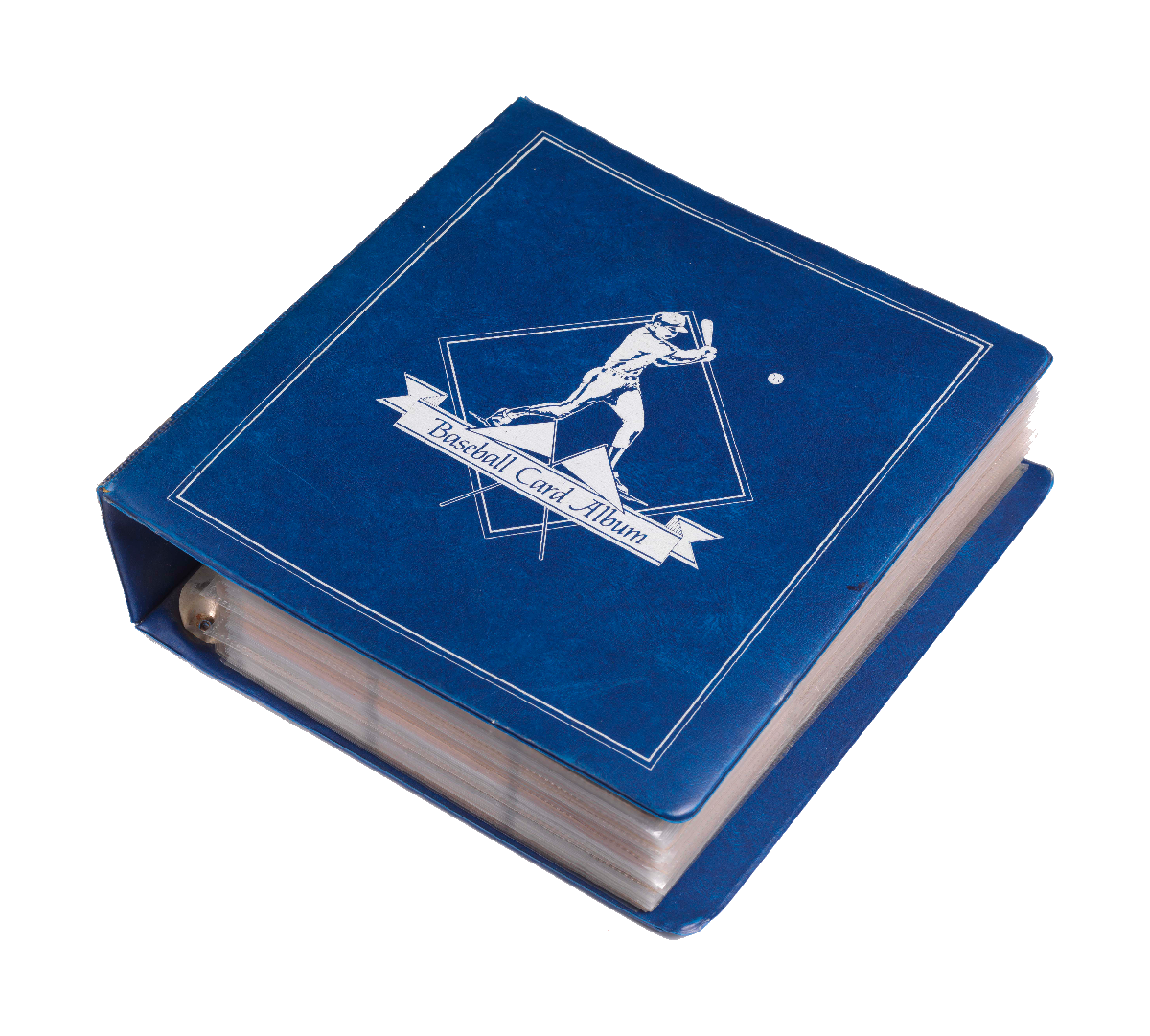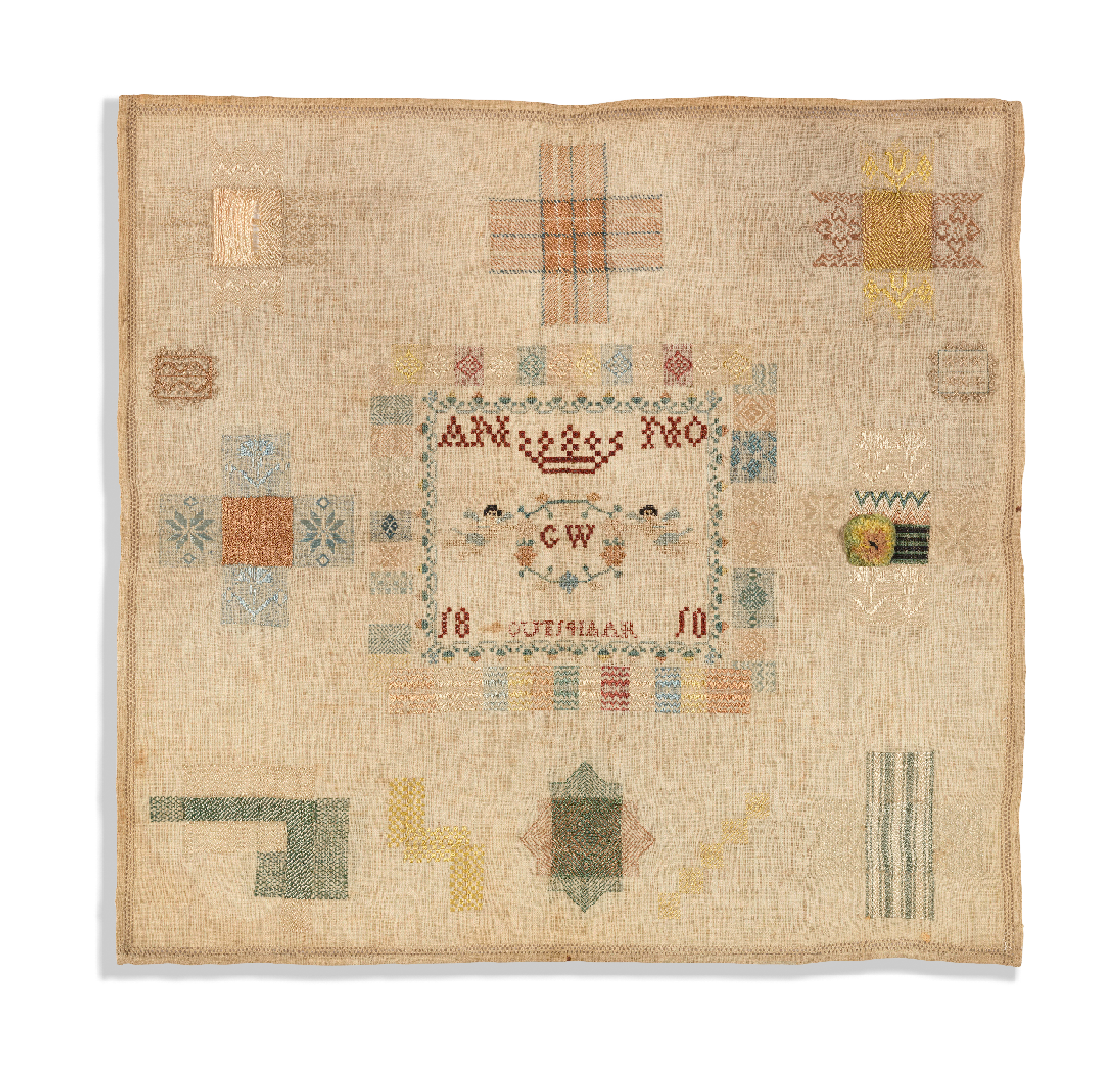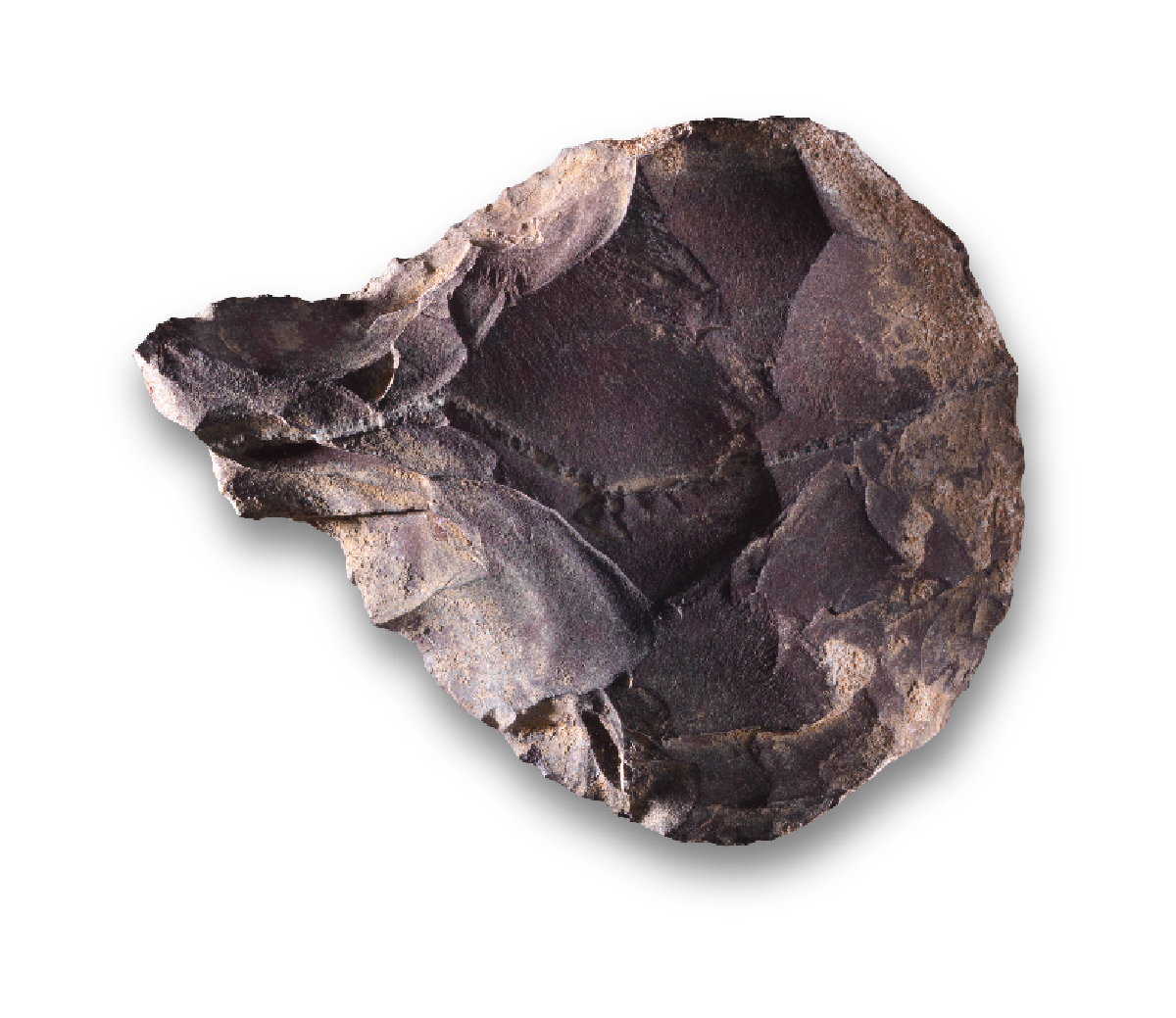Egyptian Burial Items
Face and Shoulder from an Anthropoid Sarcophagus, 332–30 BCE
Unknown maker, reportedly from Giza, Egypt
Greywacke, 18 1/2 x 20 1/2 x 5 in. (47 x 52.1 x 12.7 cm)
Brooklyn Museum, New York City, Charles Edwin Wilbour Fund, 37.1516E
Just as today’s conservators manage activity so that material items will survive into the future, embalmers in ancient Egypt were tasked with halting the natural decay of the human body so that it might remain a viable vessel for the passage of a soul into the afterlife. The mummification of the body was, in essence, a means of preserving the soul. Embalmers removed organs and stored them in canopic jars. They used natron, a naturally occurring mixture of sodium salts, to desiccate bodies; treated them with oils and resins; and wrapped them in linen bandages. Mummification was not only performed for humans: animals, like the ibis mummy here, were embalmed and entombed to accompany humans into the afterlife.
The effort to preserve the body and soul for the afterlife extended beyond physical practices. Items that accompanied mummies in burial symbolically reinforced these processes of conservation. The fragment of a mummy bandage belonging to Ii-em-hetep depicts a spell from the Book of the Dead, a collection of spells intended to help sustain the dead in the afterlife. The papyrus fragment possibly derives from the same source. Shown here is an amulet depicting a wadjet eye, or Eye of Horus, a symbol of healing and rebirth. Tags were added to preserve the names of the mummies in perpetuity, performing a function perhaps not too far removed from that of labels accompanying items in contexts of collecting, including those in this exhibition.

Click thumbnail images to view slideshow
See other items in What is Conservation?



